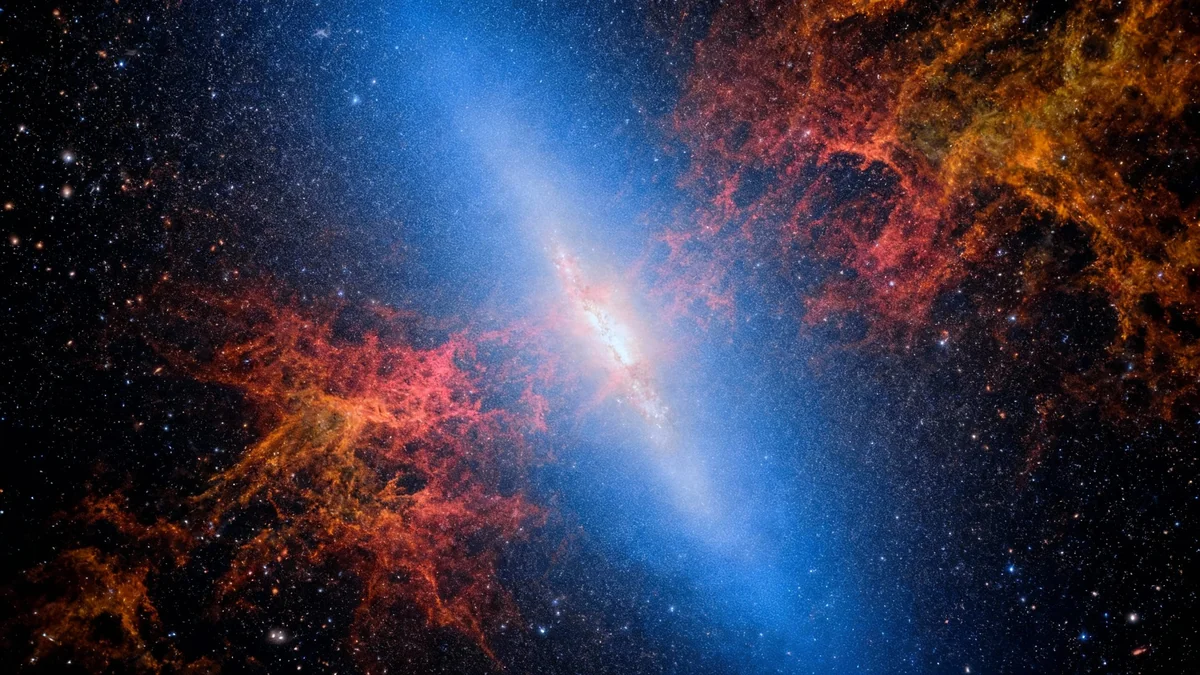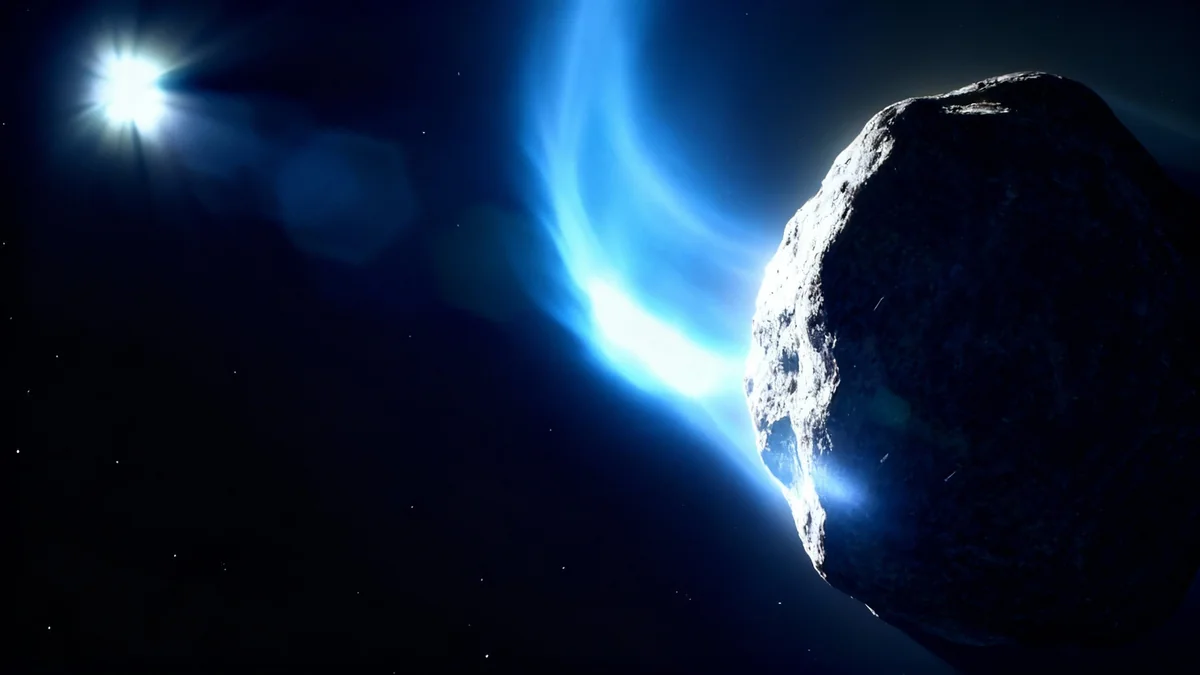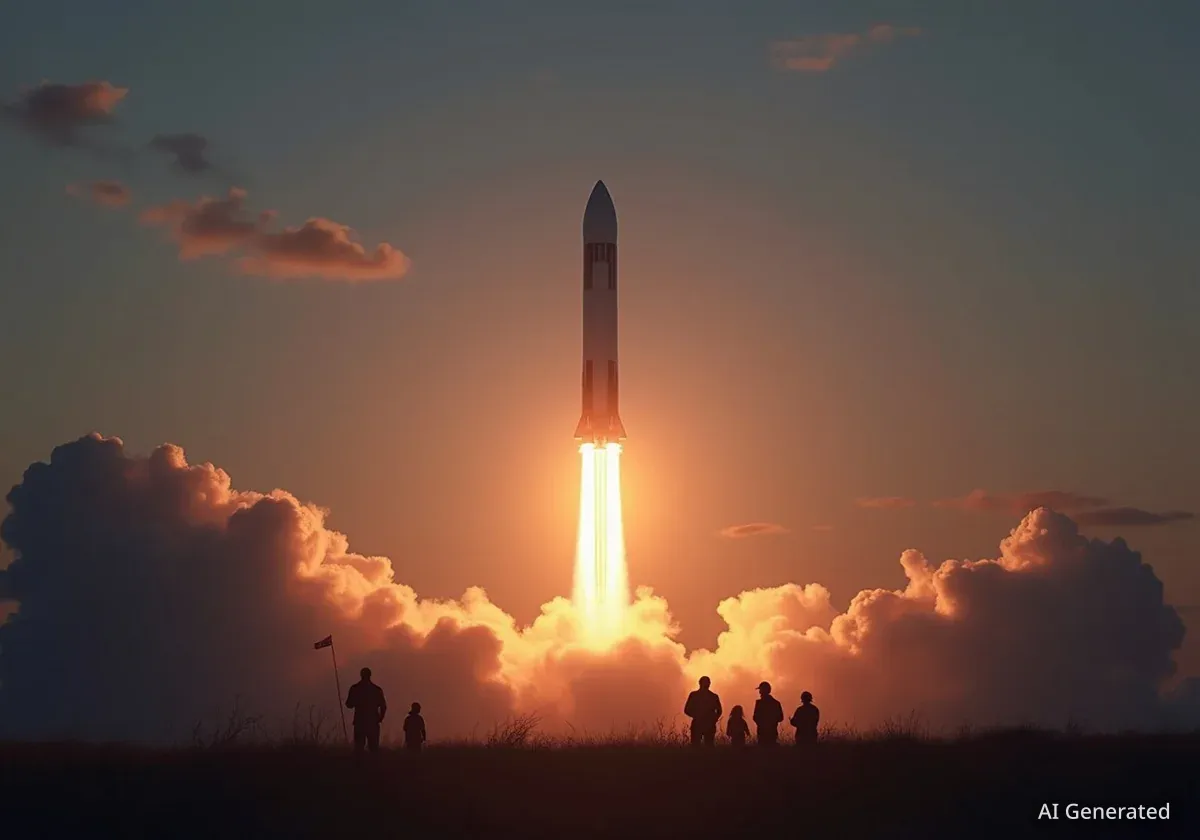A stunning new image from the James Webb Space Telescope provides an unprecedented view into the turbulent core of Messier 82, a nearby galaxy known for its exceptionally high rate of star formation. The infrared image exposes the intricate structures of galactic winds and glowing dust, offering new insights into the processes that drive cosmic creation.
Located 12 million light-years away, the Cigar Galaxy (M82) is a classic example of a starburst galaxy. Despite being smaller than our own Milky Way, it produces new stars at a rate roughly 10 times faster, making it a key subject for astronomers studying galactic evolution.
Key Takeaways
- The James Webb Space Telescope captured a new, highly detailed image of the Cigar Galaxy (M82).
- M82 is a starburst galaxy forming stars 10 times faster than the Milky Way.
- The image reveals galactic winds ejecting vast plumes of dust and gas from the galaxy's core.
- This intense star formation is believed to be fueled by a past gravitational interaction with the neighboring galaxy, M81.
A Cosmic Powerhouse in Detail
The latest observation from Webb pierces through the dense dust that typically obscures the center of the Cigar Galaxy. Using its advanced Near-InfraRed Camera (NIRCam), the telescope captured the galaxy's glowing core, which appears as a brilliant blue-white region teeming with billions of stars.
Flowing out from this central engine are dramatic plumes of red and orange dust. These structures are being propelled away from the galactic disk by powerful outflowing winds. These winds are generated by the collective energy of the numerous young, massive stars and supernova explosions occurring within the galaxy's core.
The clarity of the NIRCam instrument allows scientists to see fine details within these dust clouds, including cavities and filament-like ridges that were previously hidden from view. This level of detail helps astronomers map the flow of material out of the galaxy.
What is a Starburst Galaxy?
A starburst galaxy is a galaxy undergoing an exceptionally high rate of star formation compared to the long-term average rate. This period of intense activity is often triggered by a galactic merger or a close encounter with another galaxy, which compresses gas clouds and initiates a rapid burst of star creation.
The Engine of Star Formation
At the heart of M82's activity are more than 100 super star clusters, some of which are still in the process of being born inside dense cocoons of gas and dust. Each of these massive clusters contains hundreds of thousands of individual stars, all packed into a relatively small area.
This furious pace of stellar birth is not a random occurrence. Astronomers believe it is the direct result of M82's gravitational relationship with its much larger neighbor, Bode's Galaxy (M81). It is theorized that a past interaction between the two galaxies caused large amounts of gas to be funneled into the center of M82, providing the raw fuel for this sustained burst of star formation.
By the Numbers: M82 vs. Milky Way
- Size: M82 is about four times smaller than the Milky Way.
- Brightness: Despite its smaller size, M82 shines five times more brightly.
- Star Formation Rate: M82 creates new stars at 10 times the rate of our home galaxy.
Galactic Winds and Chemical Signatures
One of the most striking features in the new Webb image is the glow from large organic molecules. These plumes, identified as polycyclic aromatic hydrocarbons (PAHs), are being ejected from the galaxy's disk by the powerful stellar winds.
These PAH plumes are vast, stretching across 160 light-years. Their presence and distribution provide crucial data for understanding how starburst galaxies enrich the intergalactic medium with heavy elements and complex molecules, which are the building blocks for future stars and planets.
"By observing the structure of these outflows, we can better understand how a galaxy can eject gas and chemical elements into the space around it," explained one astronomer involved in the project. "This process is fundamental to how galaxies evolve over billions of years."
Observing M82 from Earth
For amateur astronomers in the Northern Hemisphere, the Cigar Galaxy is a popular target, especially during the fall and winter months. It is located in the constellation Ursa Major and can be found near the bright star Dubhe, which forms part of the Big Dipper's bowl.
Because of its proximity to Bode's Galaxy (M81), both galaxies can often be seen together in the same field of view through a small backyard telescope. They appear as small, fuzzy patches of light, offering a visible reminder of the dynamic and active universe beyond our own galaxy.





